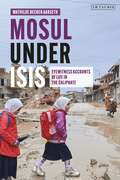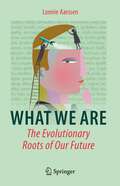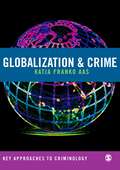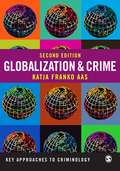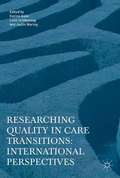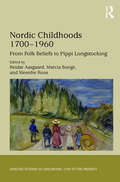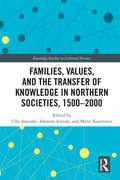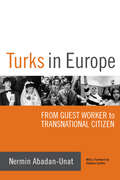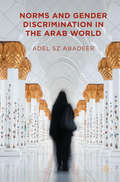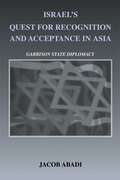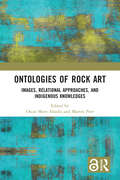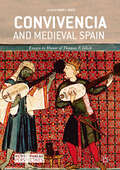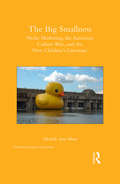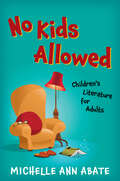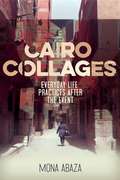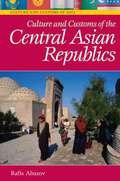- Table View
- List View
Mosul under ISIS: Eyewitness Accounts of Life in the Caliphate
by Mathilde Becker AarsethThe Islamic State of Iraq and the Levant (ISIS) ruled Mosul from 2014-2017 in accordance with its extremist interpretation of sharia. But beyond what is known about ISIS governance in the city from the group's own materials, very little is understood about the reality of its rule, or reasons for its failure, from those who actually lived under it.This book reveals what was going on inside ISIS institutions based on accounts from the civilians themselves. Focusing on ISIS governance of education, healthcare and policing, the interviewees include: teachers who were forced to teach the group's new curriculum; professors who organized secret classes in private; doctors who took direct orders from ISIS leaders and worked in their headquarters; bureaucratic staff who worked for ISIS; and an interview with the governor of Mosul at the time of ISIS's arrival. These accounts provide unique insight into the lived realities in the controlled territories and reveal how the terrorist group balanced their commitment to Islamist ideology with the practical challenges of state building. This book also benefits from access to the newly available “ISIS Files” archive at George Washington University, which contains 15,000 ISIS administrative documents.Moving beyond the simplistic dichotomy of civilians as either passive victims or ISIS supporters, Mathilde Becker Aarseth highlights here those people who actively resisted or affected the way in which ISIS ruled. The book invites readers to understand civilians' complex relationship to the extremist group in the context of fragmented state power and a city torn apart by the occupation.
What We Are: The Evolutionary Roots of Our Future
by Lonnie AarssenOther animals are driven to spend essentially their whole lives just trying to get fed, stay alive, and get laid. That’s about it. The same was true for our proto-human ancestors. And modern humans of course also require a Survival Drive and a Sex Drive in order to leave descendants. But today we spend most of our lives mainly just trying to convince ourselves that our existence is not absurd. In What We Are, Queen’s University biologist, Lonnie Aarssen, traces how our biocultural evolution has shaped Homo sapiens into the only creature that refuses to be what it is — the only creature preoccupied with a deeply ingrained, and absurd sentiment: I have a distinct ‘mental life’—an ‘inner self’—that exists separately and apart from ‘material life’, and so, unlike the latter, need not come to an end. This delusion conceivably gave our distant ancestors some wishful thinking for finding some measure of relief from the terrifying, uniquely human knowledge of the eventual loss of corporeal survival. But this came with an impulsive, nagging doubt — an obsessive underlying uncertainty: ‘self-impermanence anxiety’. Biocultural evolution, however, was not finished. It also gave us two additional, uniquely human, primal drives, both serving to help quell the burden of this anxiety. Legacy Drive generates delusional cultural domains for ‘extension’ of self; and Leisure Drive generates pleasurable cultural domains for distraction – ‘escape’ – from self. Legacy Drive and Leisure Drive, Aarssen argues, represent two of the most profound consequences of human cognitive and cultural evolution. What We Are advances propositions regarding how a visceral susceptibility to self-impermanence anxiety has — paradoxically — played a pivotal role in rewarding the reproductive success of our ancestors, and has thus been a driving force in shaping fundamental motivations and cultural norms of modern humans. More than any other milestone in the evolution of human minds, self-impermanence anxiety, and its mitigating Drives for Legacy and Leisure, account for not just the advance of civilization over the past many thousands of years, but also now, its impending collapse. Effective management of this crisis, Aarssen insists, will require a deeper and more broadly public understanding of its Darwinian evolutionary roots — as laid out in What We Are.
Globalization and Crime
by Katja Franko AasGlobalization & Crime brings together the closely related subjects of criminology and global sociology. Ideal for upper-level undergraduate and postgraduate students, it examines established topics such as human trafficking and smuggling, migration and organised crime. It also delves into new territory and explores the issues surrounding international criminal justice, comparative criminology, green criminology and human rights. New to this Second Edition is a chapter dedicated to the impact that the war on terror has had on the rule of law and a detailed discussion on the growing topic of cosmopolitan criminology. Complete with extensive references, helpful suggestions for further reading and a detailed glossary, this book will prove essential reading for students and academics in criminology, globalization, sociology and other social sciences. The Key Approaches to Criminology series celebrates the removal of traditional barriers between disciplines and, specifically, reflects criminology’s interdisciplinary nature and focus. It brings together some of the leading scholars working at the intersections of criminology and related subjects. Each book in the series helps readers to make intellectual connections between criminology and other discourses, and to understand the importance of studying crime and criminal justice within the context of broader debates. The series is intended to have appeal across the entire range of undergraduate and postgraduate studies and beyond, comprising books which offer introductions to the fields as well as advancing ideas and knowledge in their subject areas.
Globalization and Crime (PDF)
by Katja Franko AasGlobalization & Crime brings together the closely related subjects of criminology and global sociology. Ideal for upper-level undergraduate and postgraduate students, it examines established topics such as human trafficking and smuggling, migration and organised crime. It also delves into new territory and explores the issues surrounding international criminal justice, comparative criminology, green criminology and human rights. New to this Second Edition is a chapter dedicated to the impact that the war on terror has had on the rule of law and a detailed discussion on the growing topic of cosmopolitan criminology. Complete with extensive references, helpful suggestions for further reading and a detailed glossary, this book will prove essential reading for students and academics in criminology, globalization, sociology and other social sciences. The Key Approaches to Criminology series celebrates the removal of traditional barriers between disciplines and, specifically, reflects criminology’s interdisciplinary nature and focus. It brings together some of the leading scholars working at the intersections of criminology and related subjects. Each book in the series helps readers to make intellectual connections between criminology and other discourses, and to understand the importance of studying crime and criminal justice within the context of broader debates. The series is intended to have appeal across the entire range of undergraduate and postgraduate studies and beyond, comprising books which offer introductions to the fields as well as advancing ideas and knowledge in their subject areas.
Researching Quality in Care Transitions: International Perspectives
by Karina Aase Justin Waring Lene SchibevaagThis book is concerned with the complexities of achieving quality in care transitions. The organization and accomplishment of high quality care transitions relies upon the coordination of multiple professionals, working within and across multiple care processes, settings and organizations, each with their own distinct ways of working, profile of resources, and modes of organizing. In short, care transitions might easily be regarded as complex activities that take place within complex systems, which can make accomplishing high quality care challenging. As a subject of enquiry, care transitions are approached from many research, improvement and policy perspectives: from group psychology and human factors to social and political theory; from applied process re-engineering projects to exploratory ethnographic studies; from large-scale policy innovations to local improvements initiatives. This collection will provide a unique cross-disciplinary and multi-level analysis, where each chapter presents a particular depth of insight and analysis, and together offer a holistic and detail understand of care transitions.
Researching Quality in Care Transitions: International Perspectives
by Karina Aase Justin Waring Lene SchibevaagThis book is concerned with the complexities of achieving quality in care transitions. The organization and accomplishment of high quality care transitions relies upon the coordination of multiple professionals, working within and across multiple care processes, settings and organizations, each with their own distinct ways of working, profile of resources, and modes of organizing. In short, care transitions might easily be regarded as complex activities that take place within complex systems, which can make accomplishing high quality care challenging. As a subject of enquiry, care transitions are approached from many research, improvement and policy perspectives: from group psychology and human factors to social and political theory; from applied process re-engineering projects to exploratory ethnographic studies; from large-scale policy innovations to local improvements initiatives. This collection will provide a unique cross-disciplinary and multi-level analysis, where each chapter presents a particular depth of insight and analysis, and together offer a holistic and detail understand of care transitions.
Nordic Childhoods 1700–1960: From Folk Beliefs to Pippi Longstocking (Studies in Childhood, 1700 to the Present)
by Reidar Aasgaard Marcia Bunge Merethe RoosThis volume strengthens interest and research in the fields of both Childhood Studies and Nordic Studies by exploring conceptions of children and childhood in the Nordic countries (Denmark, Finland, Iceland, Norway, and Sweden). Although some books have been written about the history of childhood in these countries, few are multidisciplinary, focus on this region as a whole, or are available in English. This volume contains essays by scholars from the fields of literature, history, theology, religious studies, intellectual history, cultural studies, Scandinavian studies, education, music, and art history. Contributors study the history of childhood in a wide variety of sources, such as folk and fairy tales, legal codes, religious texts, essays on education, letters, sermons, speeches, hymns, paintings, novels, and school essays written by children themselves. They also examine texts intended specifically for children, including text books, catechisms, newspapers, songbooks, and children’s literature. By bringing together scholars from multiple disciplines who raise distinctive questions about childhood and take into account a wide range of sources, the book offers a fresh and substantive contribution to the history of childhood in the Nordic countries between 1700 and 1960. The volume also helps readers trace the historical roots of the internationally recognized practices and policies regarding child welfare within the Nordic countries today and prompts readers from any country to reflect on their own conceptions of and commitments to children.
Nordic Childhoods 1700–1960: From Folk Beliefs to Pippi Longstocking (Studies in Childhood, 1700 to the Present)
by Reidar Aasgaard Marcia JThis volume strengthens interest and research in the fields of both Childhood Studies and Nordic Studies by exploring conceptions of children and childhood in the Nordic countries (Denmark, Finland, Iceland, Norway, and Sweden). Although some books have been written about the history of childhood in these countries, few are multidisciplinary, focus on this region as a whole, or are available in English. This volume contains essays by scholars from the fields of literature, history, theology, religious studies, intellectual history, cultural studies, Scandinavian studies, education, music, and art history. Contributors study the history of childhood in a wide variety of sources, such as folk and fairy tales, legal codes, religious texts, essays on education, letters, sermons, speeches, hymns, paintings, novels, and school essays written by children themselves. They also examine texts intended specifically for children, including text books, catechisms, newspapers, songbooks, and children’s literature. By bringing together scholars from multiple disciplines who raise distinctive questions about childhood and take into account a wide range of sources, the book offers a fresh and substantive contribution to the history of childhood in the Nordic countries between 1700 and 1960. The volume also helps readers trace the historical roots of the internationally recognized practices and policies regarding child welfare within the Nordic countries today and prompts readers from any country to reflect on their own conceptions of and commitments to children.
Families, Values, and the Transfer of Knowledge in Northern Societies, 1500–2000 (Routledge Studies in Cultural History #66)
by Ulla Aatsinki Johanna Annola Mervi KaarninenThis edited collection sheds light on Nordic families’ strategies and methods for transferring significant cultural heritage to the next generation over centuries. Contributors explore why certain values, attitudes, knowledge, and patterns were selected while others were left behind, and show how these decisions served and secured families’ well-being and values. Covering a time span ranging from the early modern era to the end of the twentieth century, the book combines the innovative "history from below" approach with a broad variety of families and new kinds of source material to open up new perspectives on the history of education and upbringing.
Families, Values, and the Transfer of Knowledge in Northern Societies, 1500–2000 (Routledge Studies in Cultural History #66)
by Ulla Aatsinki Johanna Annola Mervi KaarninenThis edited collection sheds light on Nordic families’ strategies and methods for transferring significant cultural heritage to the next generation over centuries. Contributors explore why certain values, attitudes, knowledge, and patterns were selected while others were left behind, and show how these decisions served and secured families’ well-being and values. Covering a time span ranging from the early modern era to the end of the twentieth century, the book combines the innovative "history from below" approach with a broad variety of families and new kinds of source material to open up new perspectives on the history of education and upbringing.
Societies of Social Innovation: Voices and Arguments
by Ander AbadThe object of this study is to clarify the meanings and uses of social innovation in contemporary societies. The author makes use of the forms of analysis provided by theories of social change and the multi-disciplinary, long-term approach that is associated with 'Big History', with its focus on evidence and insights from different scientific and historical disciplines, together with empirical resources that are employed in advanced countries and societies in the construction of innovative environments. For contemporary societies, social innovation is a concept that is present in a wide variety of experiences and in multiple situations. Historically, it has been seen as related to a capacity for social experimentation, collective learning, the creation of knowledge and the ability to transfer it. Today, it is associated with a range of experiences, dimensions and fields within the language of management and economics, and in the social and productive uses of technology. Civic organisations of different kinds, public institutions and social movements are all aware of its importance, and repeatedly assert its significance. They associate it with risk, with uncertainty and with a role as an instrument for the reinvention of the ethics of capitalism. It is through this humanistic process that social innovation creates contexts and conditions that can improve the future of society in general.
Societies of Social Innovation: Voices and Arguments
by Ander Gurrutxaga AbadThe object of this study is to clarify the meanings and uses of social innovation in contemporary societies. The author makes use of the forms of analysis provided by theories of social change and the multi-disciplinary, long-term approach that is associated with 'Big History', with its focus on evidence and insights from different scientific and historical disciplines, together with empirical resources that are employed in advanced countries and societies in the construction of innovative environments. For contemporary societies, social innovation is a concept that is present in a wide variety of experiences and in multiple situations. Historically, it has been seen as related to a capacity for social experimentation, collective learning, the creation of knowledge and the ability to transfer it. Today, it is associated with a range of experiences, dimensions and fields within the language of management and economics, and in the social and productive uses of technology. Civic organisations of different kinds, public institutions and social movements are all aware of its importance, and repeatedly assert its significance. They associate it with risk, with uncertainty and with a role as an instrument for the reinvention of the ethics of capitalism. It is through this humanistic process that social innovation creates contexts and conditions that can improve the future of society in general.
Turks in Europe: From Guest Worker to Transnational Citizen
by Nermin Abadan-UnatOne of the foremost scholars on Turkish migration, the author offers in this work the summary of her experiences and research on Turkish migration since 1963. During these forty years her aim has been threefold: to explain the journeys made by thousands of Turkish men and women to foreign lands out of choice, necessity, or invitation; to shed light on the difficulties they faced; and to elaborate on how their lives were affected by the legal, political, social, and economic measures in the countries where they settled. The extensive research done both in Turkey and in Europe into the lives of individuals directly and indirectly affected by the migration phenomenon and the examination of these research results further enhances the value of this wide-ranging study as a definitive reference work.
Norms and Gender Discrimination in the Arab World
by Adel SZ AbadeerAbadeer incorporates informal norms such as religion, mores, myths, taboos, codes-of-conduct, customary laws, and traditions, into the structure of formal rules (e.g., polity, judiciary, laws, and the enforcement of law), which in turn influence the governance of the transactions.
Israel's Quest for Recognition and Acceptance in Asia: Garrison State Diplomacy (Israeli History, Politics and Society)
by Jacob AbadiThis title represents a comprehensive study of Israel's attempts to build diplomatic relations with countries on the Asian continent. The author argues that, despite the persistence of the Arab Israeli conflict, the Israeli Foreign Ministry was remarkably successful in gaining recognition in most Asian countries. He provides an overview of Israel's relations with Asian countries from 1948 until the present, and analyses the political, social and economic factors in each country and the role that each played in the process of rapprochement with Israel. He explores the reasons for Israel's successes as well as its failures, and analyses the flaws in Israeli diplomacy.
Israel's Quest for Recognition and Acceptance in Asia: Garrison State Diplomacy (Israeli History, Politics and Society #No. 34)
by Jacob AbadiThis title represents a comprehensive study of Israel's attempts to build diplomatic relations with countries on the Asian continent. The author argues that, despite the persistence of the Arab Israeli conflict, the Israeli Foreign Ministry was remarkably successful in gaining recognition in most Asian countries. He provides an overview of Israel's relations with Asian countries from 1948 until the present, and analyses the political, social and economic factors in each country and the role that each played in the process of rapprochement with Israel. He explores the reasons for Israel's successes as well as its failures, and analyses the flaws in Israeli diplomacy.
Ontologies of Rock Art: Images, Relational Approaches, and Indigenous Knowledges
by Oscar Moro Abadía Martin PorrOntologies of Rock Art is the first publication to explore a wide range of ontological approaches to rock art interpretation, constituting the basis for groundbreaking studies on Indigenous knowledges, relational metaphysics, and rock imageries. The book contributes to the growing body of research on the ontology of images by focusing on five main topics: ontology as a theoretical framework; the development of new concepts and methods for an ontological approach to rock art; the examination of the relationships between ontology, images, and Indigenous knowledges; the development of relational models for the analysis of rock images; and the impact of ontological approaches on different rock art traditions across the world. Generating new avenues of research in ontological theory, political ontology, and rock art research, this collection will be relevant to archaeologists, anthropologists, and philosophers. In the context of an increasing interest in Indigenous ontologies, the volume will also be of interest to scholars in Indigenous studies. Chapter 14 of this book is freely available as a downloadable Open Access PDF under a Creative Commons Attribution-Non Commercial-No Derivatives 4.0 license available at https://www.taylorfrancis.com/books/edit/10.4324/9780429321863/ontologies-rock-art-oscar-moro-abad%C3%ADa-martin-porr?context=ubx&refId=3766b051-4754-4339-925c-2a262a505074
Ontologies of Rock Art: Images, Relational Approaches, and Indigenous Knowledges
by Oscar Moro Abadía Martin PorrOntologies of Rock Art is the first publication to explore a wide range of ontological approaches to rock art interpretation, constituting the basis for groundbreaking studies on Indigenous knowledges, relational metaphysics, and rock imageries. The book contributes to the growing body of research on the ontology of images by focusing on five main topics: ontology as a theoretical framework; the development of new concepts and methods for an ontological approach to rock art; the examination of the relationships between ontology, images, and Indigenous knowledges; the development of relational models for the analysis of rock images; and the impact of ontological approaches on different rock art traditions across the world. Generating new avenues of research in ontological theory, political ontology, and rock art research, this collection will be relevant to archaeologists, anthropologists, and philosophers. In the context of an increasing interest in Indigenous ontologies, the volume will also be of interest to scholars in Indigenous studies. Chapter 14 of this book is freely available as a downloadable Open Access PDF under a Creative Commons Attribution-Non Commercial-No Derivatives 4.0 license available at https://www.taylorfrancis.com/books/edit/10.4324/9780429321863/ontologies-rock-art-oscar-moro-abad%C3%ADa-martin-porr?context=ubx&refId=3766b051-4754-4339-925c-2a262a505074
Convivencia and Medieval Spain: Essays in Honor of Thomas F. Glick (Mediterranean Perspectives)
by Mark T. AbateThis volume is a collection of essays on medieval Spain, written by leading scholars on three continents, that celebrates the career of Thomas F. Glick. Using a wide array of innovative methodological approaches, these essays offer insights on areas of medieval Iberian history that have been of particular interest to Glick: irrigation, the history of science, and cross-cultural interactions between Jews, Christians, and Muslims. By bringing together original research on topics ranging from water management and timekeeping to poetry and women’s history, this volume crosses disciplinary boundaries and reflects the wide-ranging, gap-bridging work of Glick himself, a pivotal figure in the historiography of medieval Spain.
The Big Smallness: Niche Marketing, the American Culture Wars, and the New Children’s Literature (Children's Literature and Culture)
by Michelle Ann AbateThis book is the first full-length critical study to explore the rapidly growing cadre of amateur-authored, independently-published, and niche-market picture books that have been released during the opening decades of the twenty-first century. Emerging from a powerful combination of the ease and affordability of desktop publishing software; the promotional, marketing, and distribution possibilities allowed by the Internet; and the tremendous national divisiveness over contentious socio-political issues, these texts embody a shift in how narratives for young people are being creatively conceived, materially constructed, and socially consumed in the United States. Abate explores how titles such as My Parents Open Carry (about gun laws), It’s Just a Plant (about marijuana policy), and My Beautiful Mommy (about the plastic surgery industry) occupy important battle stations in ongoing partisan conflicts, while they are simultaneously changing the landscape of American children’s literature. The book demonstrates how texts like Little Zizi and Me Tarzan, You Jane mark the advent of not simply a new commercial strategy in texts for young readers; they embody a paradigm shift in the way that narratives are being conceived, constructed, and consumed. Niche market picture books can be seen as a telling barometer about public perceptions concerning children and the social construction of childhood, as well as the function of narratives for young readers in the twenty-first century. At the same time, these texts reveal compelling new insights about the complex interaction among American print culture, children’s reading practices, and consumer capitalism. Amateur-authored, self-published, and specialty-subject titles reveal the way in which children, childhood, and children’s literature are both highly political and heavily politicized in the United States. The book will be of interest to scholars and students in the fields of American Studies, children’s literature, childhood studies, popular culture, political science, microeconomics, psychology, advertising, book history, education, and gender studies.
The Big Smallness: Niche Marketing, the American Culture Wars, and the New Children’s Literature (Children's Literature and Culture)
by Michelle Ann AbateThis book is the first full-length critical study to explore the rapidly growing cadre of amateur-authored, independently-published, and niche-market picture books that have been released during the opening decades of the twenty-first century. Emerging from a powerful combination of the ease and affordability of desktop publishing software; the promotional, marketing, and distribution possibilities allowed by the Internet; and the tremendous national divisiveness over contentious socio-political issues, these texts embody a shift in how narratives for young people are being creatively conceived, materially constructed, and socially consumed in the United States. Abate explores how titles such as My Parents Open Carry (about gun laws), It’s Just a Plant (about marijuana policy), and My Beautiful Mommy (about the plastic surgery industry) occupy important battle stations in ongoing partisan conflicts, while they are simultaneously changing the landscape of American children’s literature. The book demonstrates how texts like Little Zizi and Me Tarzan, You Jane mark the advent of not simply a new commercial strategy in texts for young readers; they embody a paradigm shift in the way that narratives are being conceived, constructed, and consumed. Niche market picture books can be seen as a telling barometer about public perceptions concerning children and the social construction of childhood, as well as the function of narratives for young readers in the twenty-first century. At the same time, these texts reveal compelling new insights about the complex interaction among American print culture, children’s reading practices, and consumer capitalism. Amateur-authored, self-published, and specialty-subject titles reveal the way in which children, childhood, and children’s literature are both highly political and heavily politicized in the United States. The book will be of interest to scholars and students in the fields of American Studies, children’s literature, childhood studies, popular culture, political science, microeconomics, psychology, advertising, book history, education, and gender studies.
No Kids Allowed: Children's Literature for Adults
by Michelle Ann AbateWhat do Adam Mansbach's Go the F**k to Sleep and Barbara Park's MA! There's Nothing to Do Here! have in common? These large-format picture books are decidedly intended for parents rather than children. In No Kids Allowed, Michelle Ann Abate examines a constellation of books that form a paradoxical new genre: children's literature for adults. Distinguishing these books from YA and middle-grade fiction that appeals to adult readers, Abate argues that there is something unique about this phenomenon. Principally defined by its form and audience, children's literature, Abate demonstrates, engages with more than mere nostalgia when recast for grown-up readers. Abate examines how board books, coloring books, bedtime stories, and series detective fiction written and published specifically for adults question the boundaries of genre and challenge the assumption that adulthood and childhood are mutually exclusive.
Cairo collages: Everyday life practices after the event (G - Reference,information And Interdisciplinary Subjects Ser.)
by Mona AbazaWith the military seizing overt power in Egypt, Cairo’s grand and dramatic urban reshaping during and after 2011 is reflected upon under the lens of a smaller story narrating everyday interactions of a middle-class building in the neighbourhood of Doqi.
Cairo collages: Everyday life practices after the event (G - Reference,information And Interdisciplinary Subjects Ser.)
by Mona AbazaWith the military seizing overt power in Egypt, Cairo’s grand and dramatic urban reshaping during and after 2011 is reflected upon under the lens of a smaller story narrating everyday interactions of a middle-class building in the neighbourhood of Doqi.
Culture and Customs of the Central Asian Republics (Culture and Customs of Asia)
by Rafis AbazovThe Central Asian Republics of Kazakhstan, Kyrgyzstan, Turkmenistan, Tajikistan, and Uzbekistan won their independence from the Soviet Union in 1991. Now they are emerging from the shadow of dominance and are subjects of intense interest from the West. The modern culture and customs of the various peoples in these geopolitical hotspots, straddling the far reaches of Europe into Asia, are revealed to a general audience for the first time. This will be the must-have volume for a broad, authoritative overview of these traditional civilizations as they cope with globalization.
